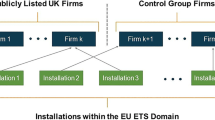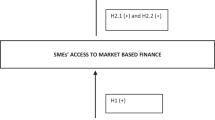Abstract
This paper analyses the effects of introducing a common EU tax base with formula apportionment on the size of the EU-wide tax base and on the distribution of the tax base between the EU member countries. We use a combined dataset of Deutsche Bundesbank's Foreign Direct Investment data (MiDi) and corporate balance sheet data (Ustan and Hoppenstedt) for the tax base estimations. The data are used to construct (i) a separate accounting and (ii) a formula apportionment tax base for the firms in the sample. Our results suggest that due to border crossing loss offset, the EU-wide corporate tax base represented by our data sample shrinks significantly. Smaller countries which are usually considered to attract book profits under the current system, i.e. Ireland and the Netherlands, tend to lose a larger part of their tax base than larger countries like Germany, Italy, France or Great Britain. However, these results should be evaluated in light of the limitations of the data used in this study since our analysis is based on German FDI data only. Furthermore, the calculations do not take into account behavioral responses of companies caused by such a system change.
Similar content being viewed by others
References
Becker, S. O., Ekholm, K., Jaeckle, R., & Muendler, M.-A. (2005). Location choice and employment decisions: a comparison of German and Swedish multinationals. CESifo Working Paper 1374.
Daly, M., & Weiner, J. M. (1993). Corporate tax harmonization and competition in federal countries: some lessons for the European Community? National Tax Journal, XLVI (4), 441–462.
Desai, M. A., Foley, C. F., & Hines, Jr., J. R. (2003). Chains of ownership, regional tax competition, and foreign direct investment. In H. Herrmann & R. Lipsey (Eds.), Foreign direct investment in the real and financial sector of industrial countries (pp. 61–98). Berlin Heidelberg New York: Springer.
Deutsche Bundesbank. (1998). The methodological basis of the Deutsche Bundesbank’s corporate balance sheet statistics. Deutsche Bundesbank Monthly Report, 50, 49–64. Available online at: http://www.bundesbank.de/download/volkswirtschaft/mba/1998/199810mba_art03_bascorpbal.pdf.
Devereux, M. P. (2004). Debating proposed reforms of the taxation of corporate income in the European Union. International Tax and Public Finance, 11, 71–89.
European Commission. (2001). Company taxation in the internal market. COM(2001)582. Available online at: http://ec.europa.eu/taxation_customs/resources/documents/company_tax_study_en.pdf.
European Commission. (2004). European tax survey. Working Paper 3. Taxation Papers.
ECOFIN. (1998). The code of conduct on business taxation. Available online at: http://europa.eu.int/comm/taxation_customs/resources/documents/primarolo_en.pdf.
Fuest, C., Hemmelgarn, T., & Ramb, F. (2005). The tax revenue implications of Marks and Spencer for Germany. Tax Notes International, 38(9), 763–767.
Fuest, C., Huber, B., & Mintz, J. (2005). Capital mobility and tax competition. Foundations and Trends in Microeconomics, 1(1), 1–62.
Gérard, M., & Weiner, J. M. (2003). Cross-border loss offset and formulary apportioment: How do they affect multijurisdictional firm investment spending and interjurisdictional tax competition? CESifo Working Paper 1004.
Goolsbee, A., & Maydew, E. L. (2000). Coveting thy neighbor’s manufacturing: the dilemma of state income apportionment. Journal of Public Economics, 75, 125–143.
Gordon, R., & Wilson, J. D. (1986). An examination of multijurisdictional corporate income taxation under formula apportionment. Econometrica, 54(6), 1357–1373.
Hellerstein, W. (2005). The case for fomulary apportionment. International Transfer Pricing Journal, 12(3), 103–111.
Lipponer, A. (2003a). A “New” micro database for German FDI. In H. Herrmann, and R. Lipsey (Eds.), Foreign direct investment in the real and financial sector of industrial countries (pp. 215–244). Berlin Heidelberg New York: Springer.
Lipponer, A. (2003b). Deutsche Bundesbank’s FDI micro database. Schmollers Jahrbuch–Zeitschrift für Wirtschafts- und Sozialwissenschaften. (Journal of Applied Social Science Studies), 123, 593–600.
McLure, C. E. (1980). The state corporate income tax: Lambs in wolves’ clothing. In H. J. Aaron, and M. J. Boskin (Eds.), The economics of taxation (pp. 327–346). Wahsington, DC: Brookings Institution.
Mintz, J. (1999). Globalization of the corporate income tax: the role of allocation. Finanzarchiv, 56(3–4), 38–23.
Mintz, J. (2004). Corporate tax harmonization in Europe: it’s all about compliance. International Tax and Public Finance, 11, 221–234.
Mintz, J., & Weiner, J. M. (2003). Exploring formula allocation for the European Union. International Tax and Public Finance, 10, 695–711.
de Mooij, R. A., & Ederveen, S. (2003). Taxation and foreign direct investment: a synthesis of empirical research. International Tax and Public Finance, 10, 673–693.
Persoff, M. (2004). The impact of EU developments on member states’ tax systems. International Tax Review, 15(2), 10–14.
Pethig, R., & Wagener, A. (2003). Profit tax competition and formula apportionment. CESifo Working Paper No. 1011.
Riedel, N., & Runkel, M. (2005). Company tax reform with a water’s edge. Working Paper, Department of Economics, University of Munich.
Shackelford, D., & Slemrod, J. (1998). The revenue consequences of using formula apportionment to calculate US and foreign-source income: a firm-level analysis. International Tax and Public Finance, 5, 41–59.
Sorensen, P. B. (2004). Company tax reform in the European Union. International Tax and Public Finance, 11, 91–115.
Stoess, E. (2001). Deutsche Bundesbank’s corporate balance sheet statistics and areas of application. Schmollers Jahrbuch: Zeitschrift fuer Wirtschafts- und Sozialwissenschaften (Journal of Applied Social Science Studies), 121, 131–137.
Weichenrieder, A. J. (2005). What determines the use of holding companies and ownership chains? Unpublished Working Paper.
Weiner, J. M. (2006). Company tax reform in the European Union. Guidance from the United States on implementing formulary apportionment in the EU. Berlin Heidelberg New York: Springer.
Weiner, J. M. (2005). Formulary apportionment and group taxation in the European Union: Insights from the United States and Canada. European Commission. Working Paper No. 8/2005, Directorate General Taxation & Customs.
Weiner, J. M. (1999). Using the experience in the US states to evaluate issues in implementing formula apportionment at the international level. Paper 83, Office of Tax Analysis.
Wellisch, D. (2004). Taxation under formula apportionment—tax competition, tax incidence, and the choice of apportionment factors. FinanzArchiv, 60(1), 24–41.
Wilson, J. D. (1999). Theories of tax competition. National Tax Journal, 52(2), 269–304.
Zodrow, G. R. (2003). Tax competition and tax coordination in the European Union. International Tax and Public Finance, 10, 651–671.
Author information
Authors and Affiliations
Additional information
JEL Code: F23 · H25
This paper represents the authors' personal opinions and does not necessarily reflect the views of the Deutsche Bundesbank or its staff. We thank Heinz Herrmann, Jana Kremer, Alfons Weichenrieder, and the participants of the Deutsche Bundesbank FDI Workshop held on September 13, 2005, in Frankfurt for their valuable comments. We are also indebted to George Zodrow and two anonymous referees. The usual disclaimer applies.
An erratum to this article can be found at http://dx.doi.org/10.1007/s10797-007-9047-7
Rights and permissions
About this article
Cite this article
Fuest, C., Hemmelgarn, T. & Ramb, F. How would the introduction of an EU-wide formula apportionment affect the distribution and size of the corporate tax base? An analysis based on German multinationals. Int Tax Public Finance 14, 605–626 (2007). https://doi.org/10.1007/s10797-006-9008-6
Received:
Accepted:
Published:
Issue Date:
DOI: https://doi.org/10.1007/s10797-006-9008-6




